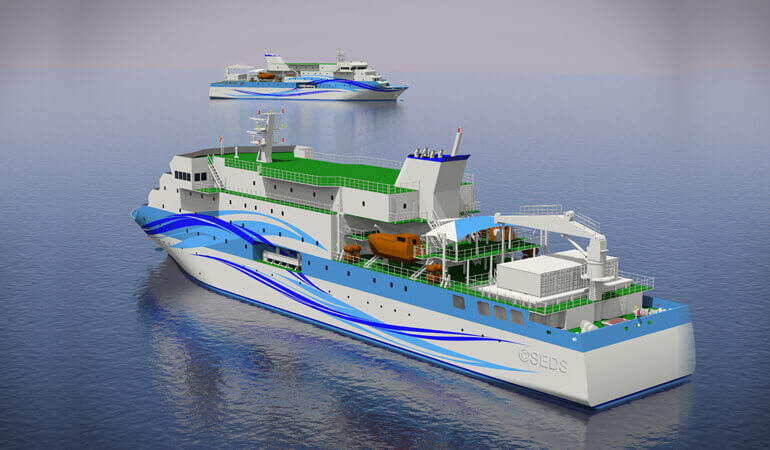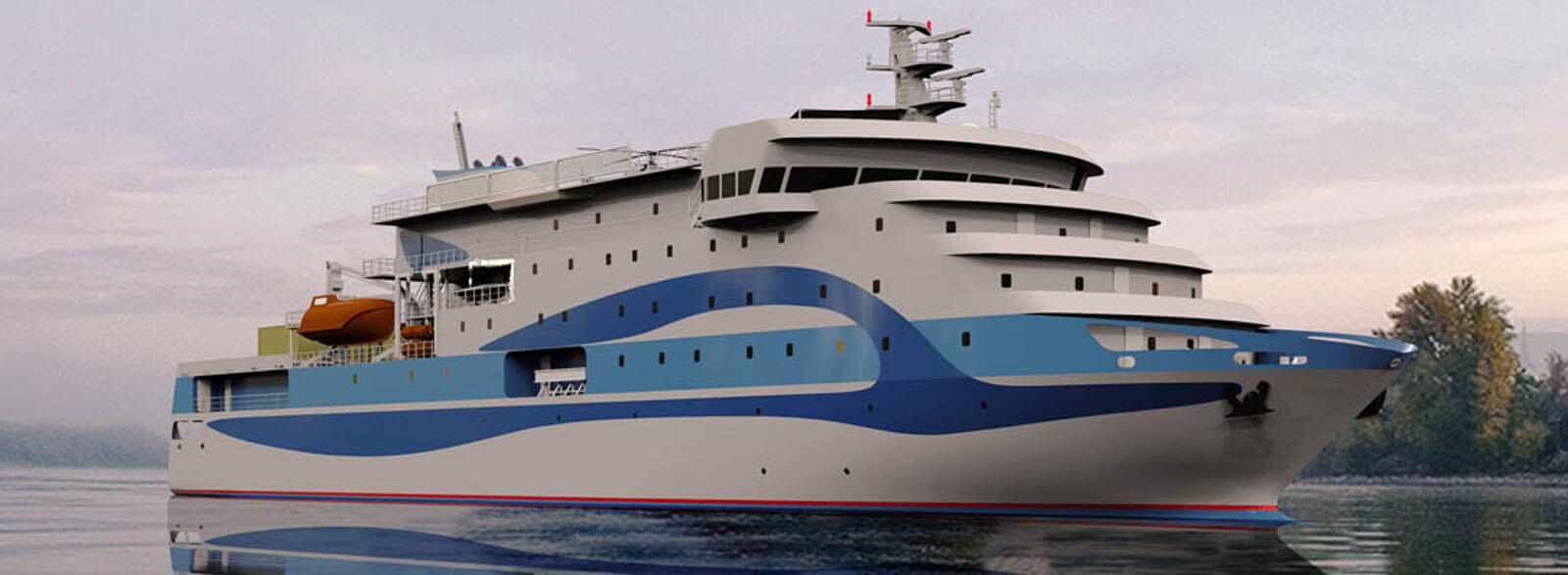Studying the Pressure loss and Flow pattern through



Keywords : CFD, RANS, Hex mesh, Hybrid mesh, Streamline, Altair Acusolve
Study motivation and objectives
Majority of present day CFD requirements are for flow pattern and pressure drop analysis. This is applicable even in case of airflow into engine room, exhaust and ventilating duct. The study was conceived out of a unique idea to reduce the structural born noise from the fan into the duct by removing the connection between the duct and the axial fan. Hence the necessity to conduct a feasibility study for comparing pressure drops between various cases.
Our current work investigates one such case in a vessel with the following objectives.
- To analyze the flow into engine room supply air duct without the presence of a connecting pipe from the inlet duct
- Evaluate the feasibility without presence of a connecting pipe and compare in the presence of a pipe.
- Demonstrate flow with a constant inflow condition and with axial exhaust fan.
With the above objectives in mind, several simulations were conducted categorized into following cases:
- Case 1: Funnel trunk: Fan source in-line with inlet duct at a stand-off
- Case 2: Funnel trunk: Fan source offset with inlet duct at a stand-off
- Case 3: Funnel trunk: Fan source offset with duct connected with a pipe
- Case 4: Complete duct: Fan source in-line with inlet duct at a stand-off
- Case 5 Complete duct: Fan source offset with inlet duct at a stand-off
- Case 6: Complete duct: Fan source in-line with inlet duct connected with pipe
- Case 7: Complete duct: Fan source offset with inlet duct connected with pipe
- Case 8: Case 5 with axial fan sliding mesh (instead of fan as a source)
- Case 9: Case 7 with axial fan sliding mesh (instead of fan as a source)
Some assumptions were made for conducting the simulations and these are:
- Incompressibility (density is constant)
- Isotherm (temperature is constant)
- Viscous flow (viscosity is taken into account)
- Unsteady flow (time dependent)
- Reynolds-averaged Navier Stokes equations (RANS) (time averaged equations of motion)
- Turbulent flow
- Subsonic flow (M < 0.3)
Geometry Modelling
Most intensive task for any CFD simulation is geometry creation and refinement in order to implement good meshing schemes. The modelling was performed in state of the art CAD software present in the department. The geometry modelled for each of the 9 cases are shown below:



Meshing
Cases 1 through 7 involved simple meshing schemes but there were challenges in capturing bends and corners accurately. Another major factor to consider is going from a smaller region to a bigger one to ensure mesh uniformity. Hybrid mesh was used comprising of tetrahedral and quadrilateral elements.
Cases 8 & 9 involved implementing axial exhaust and posed considerable challenges in modelling and meshing. These 2 cases require finer mesh compared to other 7 cases in order to capture the axial blades properly and accurately. And hence these two cases were more time intensive. Similar to previous cases hybrid mesh was employed.
Solver and case setup
Once the meshing was completed, a Galerkin/Least square finite element based solver known as Acusolve was used to run the simulation. Acusolve is a CFD solver offered by Altair engineering.
The following inputs were used for setting up the runs:
- Flow rate
- Transient simulation time for 20 sec
- Turbulence model = k-w SST
- Axial fan speed in case of moving mesh
- Inlet and outlet BC’s
Results
Address
Smart Engineering & Design Solutions
(India) Private Ltd.
37/1803, 2nd Floor, Manath Building, Seaport - Airport Road, Kakkanad, Kochi, Kerala 682 030, India
Phone
India : 91 - 484 – 2422329,
91 - 484 – 2982329
Bahamas : 1-242-327-8938
Email & Website
Email : sedsindia@marinedesigners.in
Website : www.marinedesigners.com
